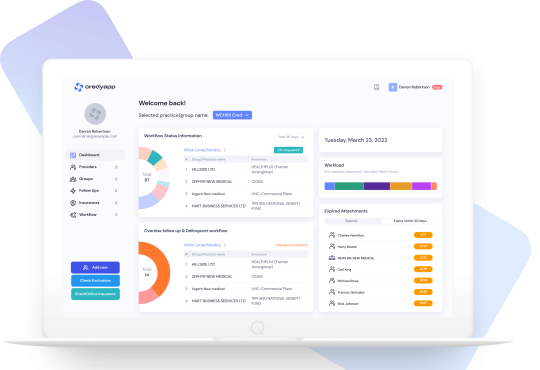
For a manufacturer, maintenance isn’t the most interesting topic, but it’s essential to his productivity. One can maximise assets and boost bottom-line revenues by improving how he manages spare parts, schedule maintenance, and monitor his equipment. Improving equipment uptime while lowering maintenance and operational costs can be crucial. However, with proper technology to power these processes and streamlined performance, one can maximise profitability as well as improve equipment efficiency. Adoption of the best CMMS software to drive lower maintenance costs can help in taking a business to the next level.
What is a computerized maintenance management system (CMMS)?
Software that centralizes maintenance data and streamlines maintenance operations is known as a Computerized Maintenance Management System, or CMMS. It aids in maximizing the use and accessibility of tangible assets like machines, transportation, communications, plant infrastructures, and other assets. CMMS systems are used in manufacturing, energy, transportation, building, and other sectors where physical infrastructure is essential.
With the use of the best CMMS software to reduce cost, organisations and maintenance teams are able to:
- Monitor equipment and employee certifications
- Overseeing work orders
- Encourage predictive and preventative maintenance, and minimise reactive maintenance.
- Control inventory
- Perform asset analysis and produce performance reports
- Keep track of vital asset details like the maker, model, price, location, and IoT capabilities as well as any relevant paperwork
- like manuals and warranties.
- Give their maintenance personnel access to and control over work orders.
Here are some important characteristics to look for in order to build a compelling business case for adopting a CMMS software
1. Cutting down on equipment downtime
When unexpected equipment failure occurs, your company will suffer two losses: production money lost, AND reputational harm. Your first line of defence against unplanned downtime and failures is preventive maintenance.
Preventive maintenance is a successful strategy because it enables you to do inspection duties and plan repair work on specific equipment while other assets are still in use. By doing this, you can continue to meet client demand while minimising equipment downtime. Your assets will be less likely to break down with routine, planned maintenance, which will cut down on your repair expenses.
However, for preventive maintenance to be effective, you must manage each asset well. This calls for seamless coordination between maintenance and production as well as clear, continuous engagement. A potent tool for involving both areas of your organisation is CMMS/EAM software.
2. Increasing the efficiency of the equipment
Maintaining current equipment is more profitable than buying replacements, and CMMS technology will assist you in managing Overall Equipment Effectiveness. Every asset’s availability, performance, and output quality may be tracked in real-time with CMMS software, providing data for Preventive Maintenance programmes and routine checks. This aids in maintaining the calibre of your equipment, maintaining an accurate spare parts inventory, and creating key spares programmes. Overall Equipment Effectiveness is essential for safety and production reliability, especially in industries with strict regulations.
By approaching maintenance in a proactive manner, you can keep costs under control, prevent extended outages, and reduce the need for emergency part purchases. Increasing your Overall Equipment Effectiveness will make your operations much more dependable and efficient, resulting in higher outputs and a more lucrative maintenance role.
Best-in-class CMMS solutions also offer beneficial data insights, such as Root Cause Analysis or downtime reason codes. Additionally, you can perform analysis on business Key Performance Indicators (KPIs) and metrics to help you decide when to repair or overhaul equipment as opposed to when to replace it.
3. Process streamlining:
To minimise technical downtime, you must record data when it is being used and give it to your employees. The use of CMMS/EAM software allows maintenance specialists to operate through their smartphone or tablet, that in turn increases both comfort and effectiveness. Ultimately they will be able to access mobile applications to view labour times, part issues, metre reading updates, electronic checklists, and inspection sites. They will be able to start, request, and carry out WOs on the ground as a result, cutting down on wasted time (NPT).
4. Improve Planning and Scheduling for Maintenance
When it comes to equipment maintenance, many manufacturers still use a reactive timetable even though a proactive one would be more cost-efficient. Additionally, it has been demonstrated to be safer and more effective than break-fix maintenance because it increases equipment life while lowering operating expenses.
You may review schedules with one another, agree on the tasks to be done, improve collaboration between management and maintenance, and ensure that the necessary personnel, materials, tools, instructions, permits, and safety protocols are available by using CMMS/EAM software.
5. Minimizing Paperwork
Your firm generates a large volume of maintenance data, ranging from straightforward temperature adjusting requests to very sophisticated automatic notifications of equipment problems. You require a simple method of managing and organising this data without having to dig through mountains of paperwork in order to operate profitably.
Paper WOs are no longer required thanks to CMMS/EAM solutions. Employees can submit work orders from anywhere since they have access to browser-based software. Users are automatically informed when work has been accomplished and these are right away added to the task backlog for processing.
6. Accuracy and knowledge transfer:
A CMMS can be used to store documentation, repair manuals, and media-capture maintenance methods along with the respective assets. By capturing and preserving this information, standardised practices and high-quality work are produced. Additionally, it keeps that information from leaving with exiting staff and transferring to new technicians.
7. Making Sure of Regulatory Compliance
Although compliance is essential to safe manufacturing processes, you shouldn’t spend more time on it than is absolutely necessary. Event Tracking modules, which produce a digital audit trail for regulatory compliance, are part of the best-in-class CMMS technology.
By switching from paper-based logs to a CMMS system, you can conveniently access information and lower the chance of facing penalties for noncompliance. Through a single platform, you can track all kinds of occurrences, such as accidents, emissions, inspections, corrective measures, and Work Orders.
8. Health, safety, and the environment:
CMMS provide consolidated reporting for safety, health, and environmental issues. This is in accordance with compliance management. The goals are to lessen risk and keep an atmosphere that is safe for operations. Investigations to examine recurrent events or errors, incident and corrective measures tracking, and process change are all services that CMMS software can offer.
9. Having a unified View of the Metrics and KPIs for Maintenance
Result-driven computerized maintenance management system offers business intelligence tools that summarize KPIs and metrics to support your decision-making. Your team may fulfil strategic objectives by utilising effective data management, predictive analytics, and reporting.
Additionally, you can give people at all business levels access to real-time data using mobile-friendly CMMS software so they can get immediate answers to crucial business concerns.
10. Cut Back on Overtime
Enhancing maintenance limits employee costs while simultaneously lowering costs by minimising downtime. Less time is required for turnarounds and emergency repairs with safer, more effective equipment in place. This eliminates the overtime charge for maintenance.
They may define resource levels around scheduled work with the correct CMMS software in place, and when needs change, those calendars can be quickly modified.
Final Words
The distinctive features of CMMS make it stand out. The use of CMMS has revolutionised maintenance management by merging the many operational tools as discussed above and consolidating them into a single platform.
Its natural ability to quickly organise and manage tasks like work order management, scheduling, and equipment maintenance provides it with a distinct advantage over other businesses.




